Abstract
The survival of a laboratory strain and a naturally occurring fecal strain of Escherichia coli, with and without a Tn5-containing derivative of ColE1, was examined after aerosol dispersal in a laboratory office and a barn under ambient temperature and humidity conditions. Following the release of paired strains, air and diverse types of surfaces were assayed for the test organisms. In both environments, the number of airborne bacteria declined rapidly within the first 2 h. Longer survival was found on surfaces and varied with surface type: recovery was greatest from wood products. Organisms persisted for 1 day in the office and for up to 20 days in the barn. Survival of the fecal strain was better than that of the laboratory strain in both test environments. In general, plasmid-bearing strains fared similarly to their plasmidless parents, but in several comparisons the ColE1::Tn5-containing strain showed enhanced survival. These studies have implications for the present and proposed release of genetically engineered organisms with and without plasmid vectors.
Full text
PDF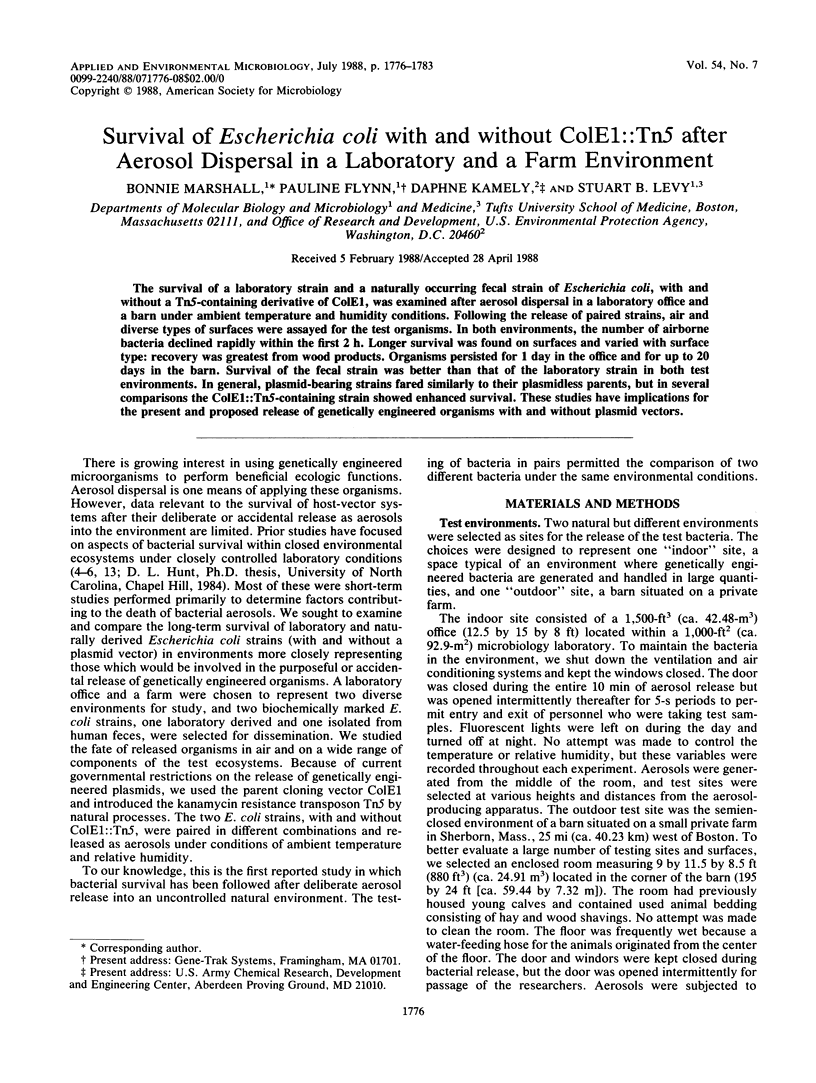
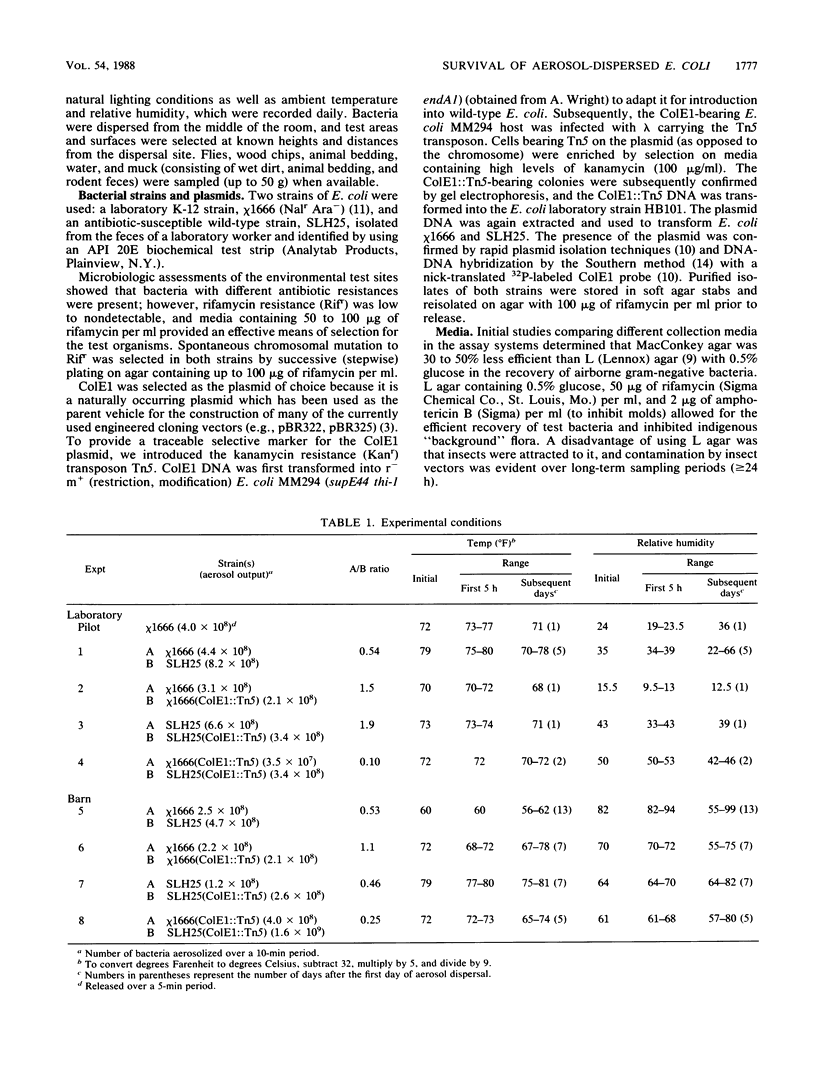
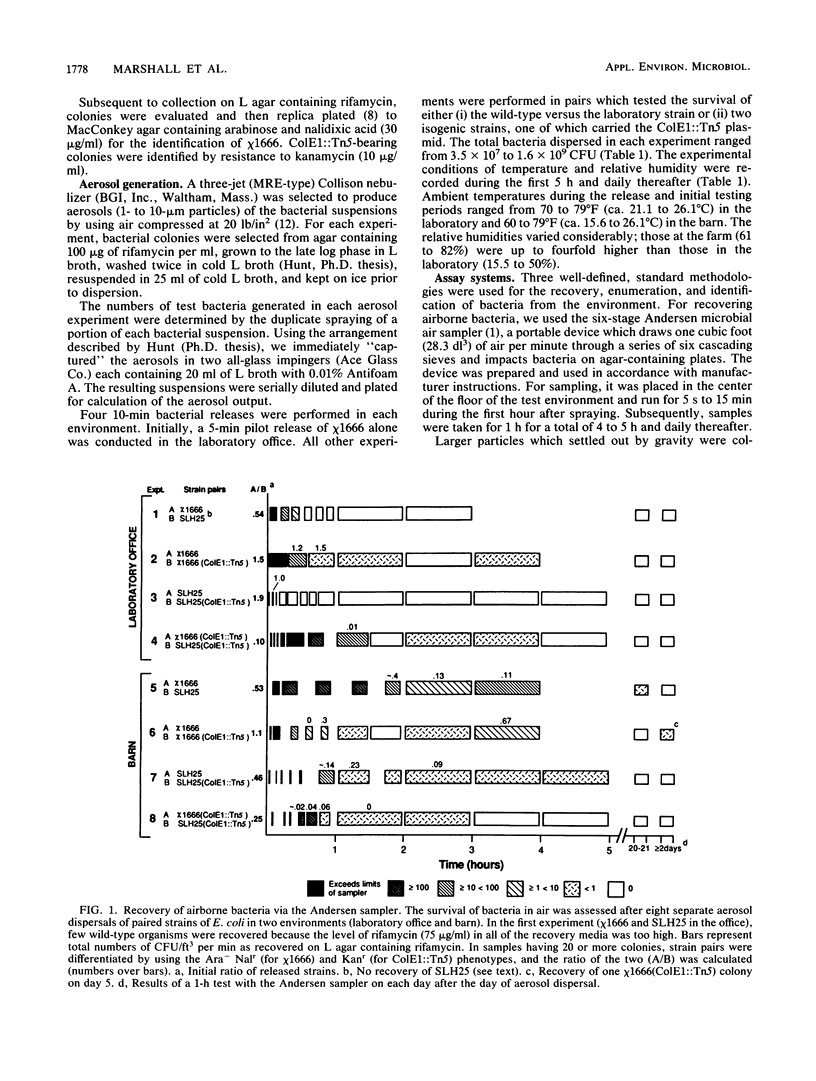
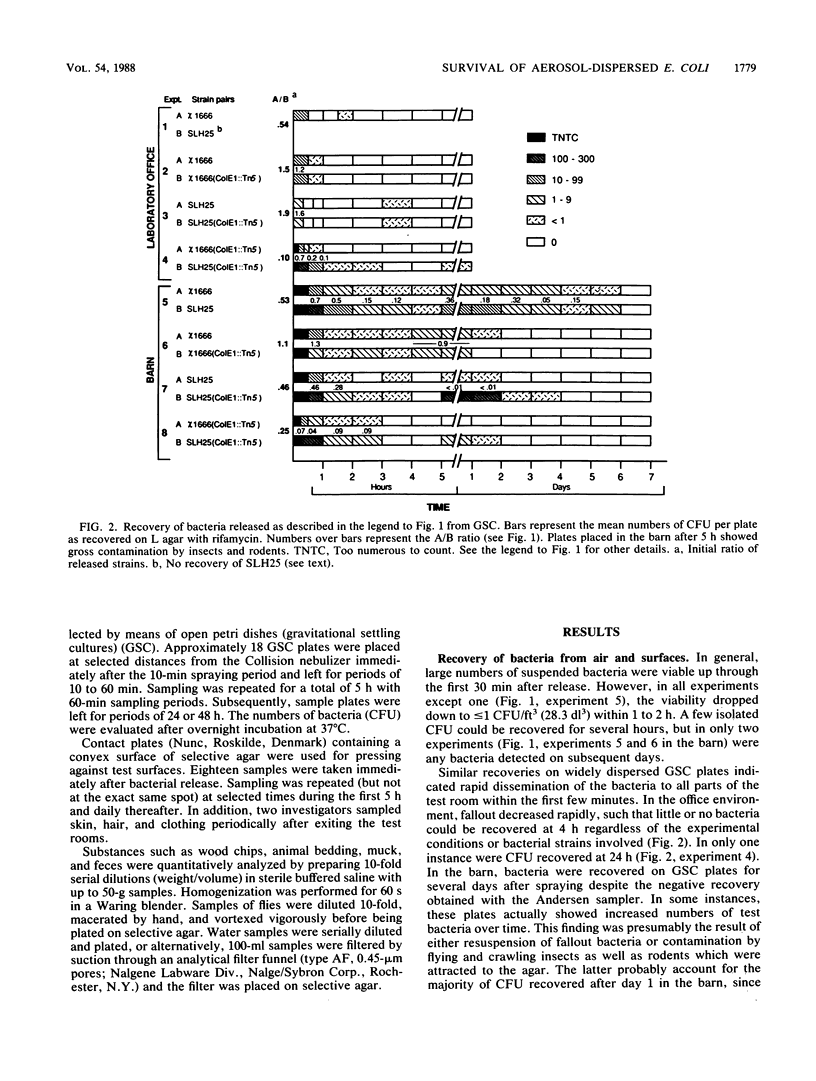
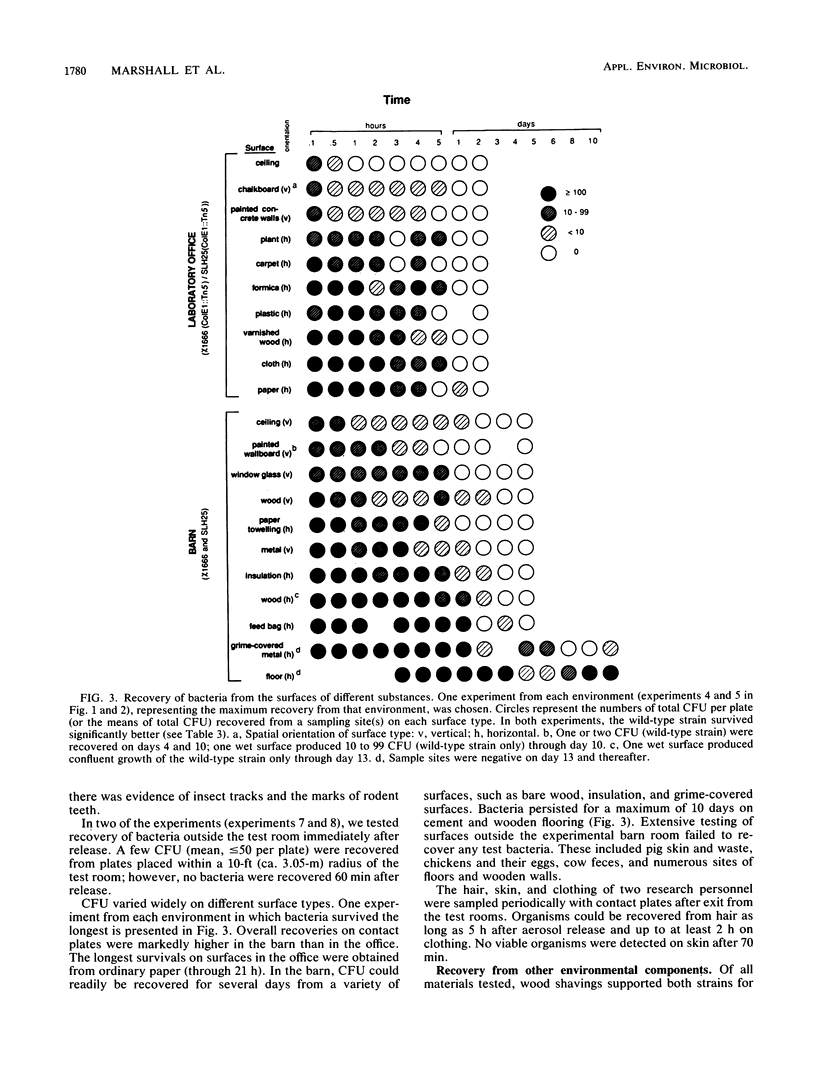
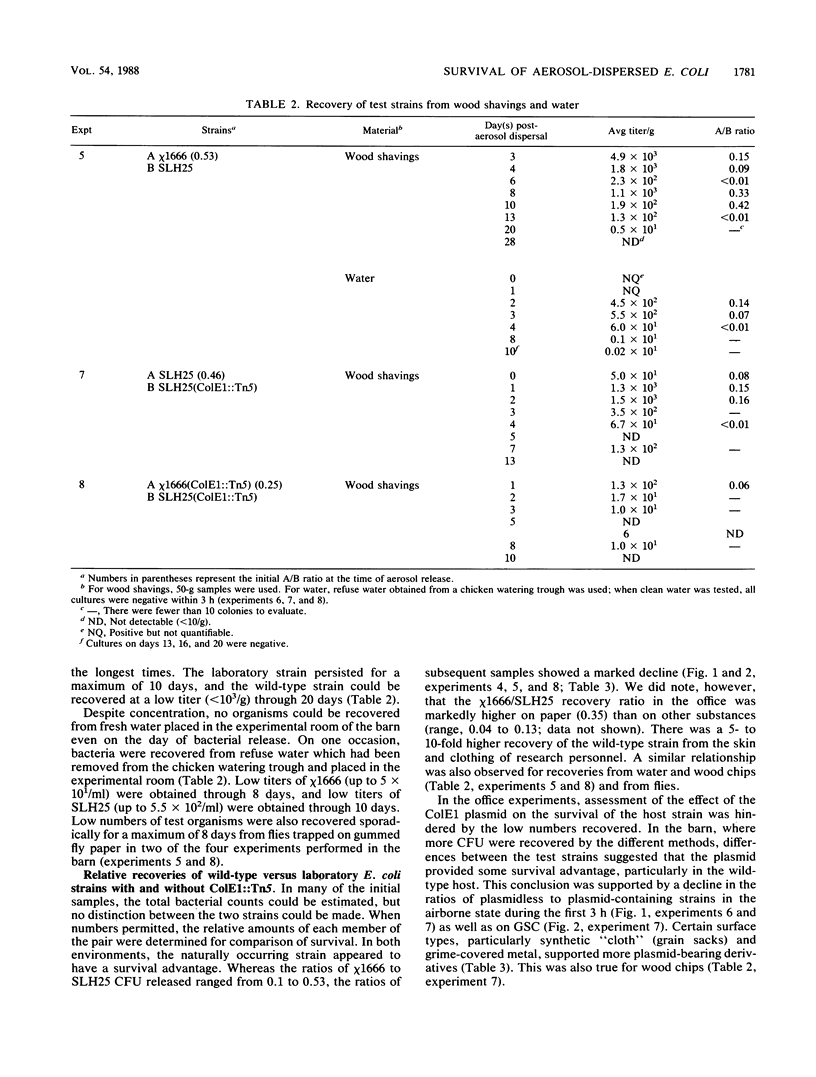
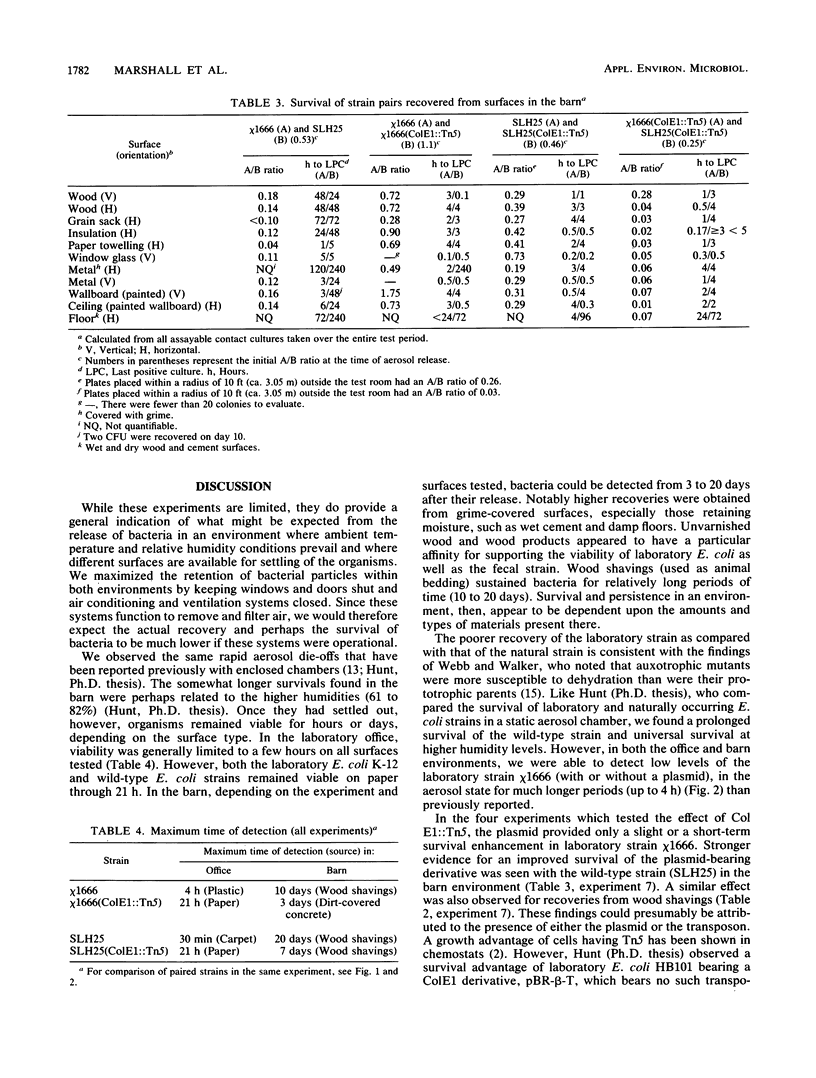
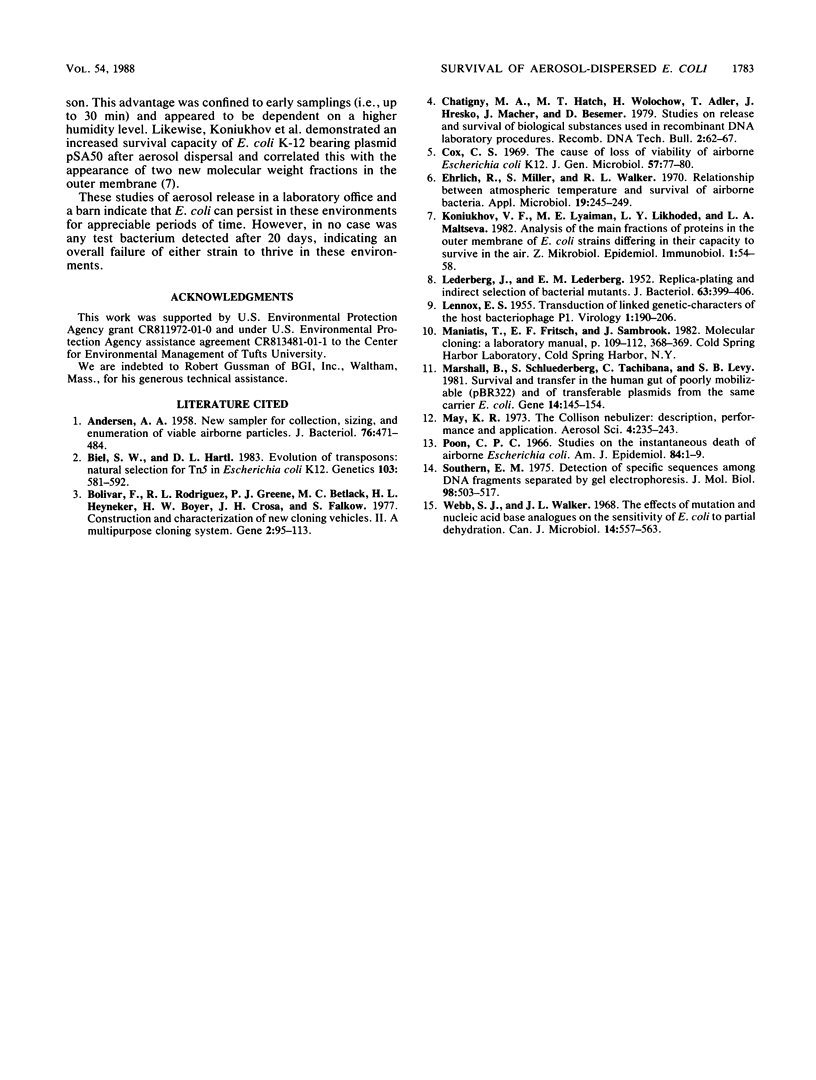
Selected References
These references are in PubMed. This may not be the complete list of references from this article.
- ANDERSEN A. A. New sampler for the collection, sizing, and enumeration of viable airborne particles. J Bacteriol. 1958 Nov;76(5):471–484. doi: 10.1128/jb.76.5.471-484.1958. [DOI] [PMC free article] [PubMed] [Google Scholar]
- Biel S. W., Hartl D. L. Evolution of transposons: natural selection for Tn5 in Escherichia coli K12. Genetics. 1983 Apr;103(4):581–592. doi: 10.1093/genetics/103.4.581. [DOI] [PMC free article] [PubMed] [Google Scholar]
- Bolivar F., Rodriguez R. L., Greene P. J., Betlach M. C., Heyneker H. L., Boyer H. W., Crosa J. H., Falkow S. Construction and characterization of new cloning vehicles. II. A multipurpose cloning system. Gene. 1977;2(2):95–113. [PubMed] [Google Scholar]
- Cox C. S. The cause of loss of viability of airborne Escherichia coli K12. J Gen Microbiol. 1969 Jul;57(1):77–80. doi: 10.1099/00221287-57-1-77. [DOI] [PubMed] [Google Scholar]
- Ehrlich R., Miller S., Walker R. L. Relationship between atmospheric temperature and survival of airborne bacteria. Appl Microbiol. 1970 Feb;19(2):245–249. doi: 10.1128/am.19.2.245-249.1970. [DOI] [PMC free article] [PubMed] [Google Scholar]
- Koniukhov V. G., Liaiman M. E., Likhoded L. Ia, Mal'tseva L. A. Analiz osnovnykh fraktsii belkov vneshnei membrany v shtammakh E. coli, razlichaiushchikhsia po vyzhivaemosti v vozdukhe. Zh Mikrobiol Epidemiol Immunobiol. 1982 Jan;(1):54–58. [PubMed] [Google Scholar]
- LEDERBERG J., LEDERBERG E. M. Replica plating and indirect selection of bacterial mutants. J Bacteriol. 1952 Mar;63(3):399–406. doi: 10.1128/jb.63.3.399-406.1952. [DOI] [PMC free article] [PubMed] [Google Scholar]
- LENNOX E. S. Transduction of linked genetic characters of the host by bacteriophage P1. Virology. 1955 Jul;1(2):190–206. doi: 10.1016/0042-6822(55)90016-7. [DOI] [PubMed] [Google Scholar]
- Marshall B., Schluederberg S., Tachibana C., Levy S. B. Survival and transfer in the human gut of poorly mobilizable (pBR322) and of transferable plasmids from the same carrier E. coli. Gene. 1981 Aug;14(3):145–154. doi: 10.1016/0378-1119(81)90110-4. [DOI] [PubMed] [Google Scholar]
- Poon C. P. Studies on the instantaneous death of airborne Escherichia coli. Am J Epidemiol. 1966 Jul;84(1):1–9. doi: 10.1093/oxfordjournals.aje.a120613. [DOI] [PubMed] [Google Scholar]
- Southern E. M. Detection of specific sequences among DNA fragments separated by gel electrophoresis. J Mol Biol. 1975 Nov 5;98(3):503–517. doi: 10.1016/s0022-2836(75)80083-0. [DOI] [PubMed] [Google Scholar]
- Webb S. J., Walker J. L. The effects of mutation and nucleic acid base analogues on the sensitivity of E. coli to partial dehydration. Can J Microbiol. 1968 May;14(5):557–563. doi: 10.1139/m68-094. [DOI] [PubMed] [Google Scholar]


